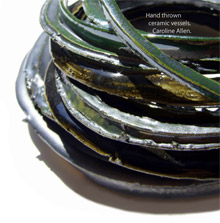Erik van Rossenberg (University of Leiden)
Early Bronze Age metal-hilted daggers (Vollgriffdolche) constituted a multidimensional
novelty in Central Italy. Vollgriffdolche introduced connectivity with continental Europe in the form of a new class of metalwork, i.e. decorated, composite and true-bonze pieces of metalwork, as well as major rivers as a new depositional context. This multi-dimensional novelty touches upon all stages in object biographies (i.e. raw material, production, exchange, use and deposition) and reaches beyond craftmanship in itself. I will adopt the notions of ‘tournament of value’ and ‘boundary work’ as the best fit for the many dimensions of Vollgriffdolche (i.e. technological innovation, decorated surfaces, size distribution, punctuated spatial distributions, cosmological knowledge related to metalwork deposition). These notions help to underscore the historically defining role of Vollgriffdolche in cross-cultural network changes. Whether ‘travelling artisans’ in the strict sense or not, the craftspeople with skills and knowledge related to this class of metalwork did work at (or were constitutive of) nodes in networks.
Vollgriffdolche forged relationships that highlight the articulation (followed by
integration) of two distinctive Early Bronze Age metallurgical spheres in the region of
Central Italy itself and, in a second stage, reached even further to bring continental
European and Mediterranean metallurgical traditions together. These network
changes at the Early-Middle Bronze Age transition resulted in a structure of landbased
and seaborne connectivity in Central Italy that fully integrated this region within
the Italian peninsula at large. This coincided with a peak in copper mining in Tuscany
and included metalwork-related and cross-cultural exchanges with Bronze Age
Greeks (so-called Mycenaeans) in the Bay of Naples. The multi-dimensional and
cross-cultural connotation of Vollgriffdolche in the context of these particular network
changes goes to the very heart of grand narratives in Bronze Age studies, so much
so that a historically specific, network-based notion of creativity (in terms of tournaments of value and boundary work) can substitute for generalising, ‘black box’
notions of technological innovation, exchange networks and social interaction.
Erik van Rossenberg


